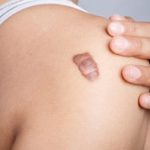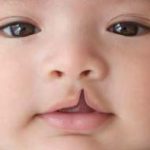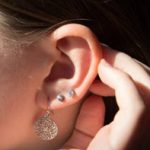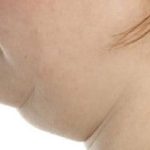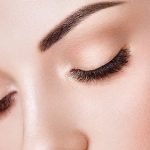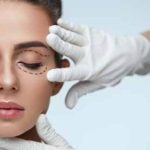What is cheek augmentation?
Cheek augmentation is a cosmetic surgical procedure that is intended to emphasize the cheeks on a person’s face. To augment the cheeks, a plastic surgeon may place a solid implant over the cheekbone. Injections with the patients’ own fat or a soft tissue filler, like Restylane, are also popular. Rarely, various cuts to the zygomatic bone (cheekbone) may be performed. Cheek augmentation is commonly combined with other procedures, such as a face lift or chin augmentation.
CHEEK AUGMENTATION COST IN IRAN
The cost of a cheek enhancement procedure in Iran is much more affordable than in many other countries. Depending on the reputation of the surgeon, the technique used, and the clinic’s fee, cheek augmentation prices ranges between $200 and $3000.
As the most expensive cheek augmentation option, a cheek implants surgery costs between $1500 and $3000 in Iran. This cost includes all related expenses, including, lab tests, anesthesia, medications, doctor’s fee, and clinic’s fee. To make a comparison, the average cost of a similar procedure in America, NOT including anesthesia, operating room fee, and other related expenses, is over $3500.The cost of a fat transfer for cheek augmentation in Iran falls between $500 and $1500, depending on the amount of fat injected. The cheapest cheek enhancement procedure is injectable dermal fillers, which costs between $200 and $500 in Iran.
Candidates for Cheek Augmentation
People who can benefit from cheek augmentation include:
- Patients experiencing premature aging and loss of volume due to fat loss in the mid-face
- Older patients who wish to restore fullness and eliminate sagging in the cheeks due to the aging process
- People who wish to have more volume in their cheeks or more pronounced cheekbones
Options for Cheek Augmentation
Our cosmetic and plastic surgeons can perform cheek augmentation surgery alone or at the same time as other facial procedures, such as a face lift, eye lift, or forehead lift.
At UT Southwestern, our options for cheek augmentation include:
- Fat transfer: Injection of fat harvested from elsewhere in the patient’s body to add fullness to the cheeks
- Hyaluronicacid filler injections: These biodegradable fillers are FDA approved and made with hyaluronicacid, which is our bodies own extracellular matrix
What to Expect From Cheek Augmentation
Cheek augmentation surgery with fat injection is an outpatient procedure, and patients can go home the same day. In the first step, our surgeons discuss anesthesia options with patients to provide comfort during the procedure. Anesthesia options include:
- Local anesthesia
- General anesthesia
- Sedation
For a fat transfer procedure, the surgeon makes tiny incisions to harvest fat either from the abdomen or flank and back areas and transfer it to the cheeks. Not all the fat will survive and repeat injection maybe necessary, but the amount that survives will stay forever as the injected fat becomes integrated in the bodies’ own tissue.
During their recovery, patients can expect to:
- Receive medication to relieve pain and/or reduce the risk of infection for a few days after the procedure
- Have some swelling and mild bruising that worsens for the first two to three days; most swelling goes away in about two weeks, but some minor swelling can last several weeks.
- Return to work and most activities within a week
- Resume more strenuous activities after a few weeks
Filler injections include an outpatient office visit and may need to be repeated more than once. Unlike a fat injection, the results are more reliable, but long-term maintenance with repeat injections after one year may be necessary.
 TYPES OF CHEEK ENHANCEMENT PROCEDURES
TYPES OF CHEEK ENHANCEMENT PROCEDURES
Cheek augmentation can be done in several ways. There are three main methods for enhancing cheeks: cheek implants, cheek fillers, and cheek augmentation with fat transfer.
Cheek implants
Cheek implants are anatomically designed to add fullness to the cheeks and improve their contour. They are made of different materials, including solid silicone, which is the most common material of cheek implants, as well as high-density porous polyethylene, known by its brand name Medpor, and ePTFE (Polytetrafluoroethylene), marketed as Gore-Tex.
The difference between silicone implants and Medpor and Gore-Tex is that the removal of silicone implants, in case of a need for revision or changing your mind later, is easier than the other two options, especially Medpor, because Medpore and Gore-Tex provide better integration with the underlying bone and tissues due to the tissue ingrowth, making it more challenging to remove them. Because of this characteristic, these two types of implants provide a more natural result, which is considered an advantage in another respect.
In terms of shape, cheek implants can be malar, submalar, or combined. Malar cheek implants, which are the most common shape of implants used for cheek augmentation, are placed directly on the cheekbones, offering a sharper projection on the cheeks and a higher, more defined cheek contour.
Submalar implants are not intended to augment the cheekbones. They are placed under the cheekbones to increase the volume of the midface in people whose cheekbones are already ok but desire a fuller midface. Combined implants are larger implants that cover both the malar and submalar areas.
Cheek fillers
A non-surgical cheek augmentation option is cheek fillers. The dermal fillers used for cheek enhancement is the same substance used to add volume or smooth wrinkles in other parts of the face. Injectable fillers are can be temporary or permanent, depending on their material.
Cheek augmentation with fat grafting
Fat transfer, or fat grafting, is a very popular method for cosmetic surgery with a variety of uses. In this procedure, fat is extracted from the patient’s own body using liposuction and, after being purified, is re-injected into other areas with the aim of adding volume and improving the contour of specific parts of the body.
What are the results like?
The final results of cheek augmentations are quite impressive. But it takes some patience to see them. Initially, after the surgery your face will be extremely swollen, as with facial plastic surgery. If your surgeon opts for the fat transfer the results will be based upon how much fat was injected into your cheeks and how much fat your body has retained. This can be affected by many factors, such as your body’s individual metabolism and your surgeon’s specific techniques.
If solid cheek implants are used then your final results will be more predictable. Although good results are always expected, it’s hard to create realistic expectations with facial surgeries. There are factors that affect how your body will respond to this surgery, and of course, even though the results of the surgery will be permanent your body will continue to age.
Because of this on rare occasions, it’s possible that you might not achieve your desired results with a single procedure. In these cases, you’re left with a few options. Some patients require a second surgery. While other patients simply “touch up” and boost their surgical results with injectable fillers as a long term maintenance plan. This allows them to achieve the results they want without returning to surgery.
THE CHEEK AUGMENTATION PROCEDURE
An essential component of an aesthetically favorable surgical outcome is restoring harmony and balance to the facial area. Volume loss is to be expected from virtually every patient. There are two ways that the cheek area can lose volume. In some cases, the thick pad of fat that sits over the cheekbone diminishes with age. In other cases, the volume from the cheek area actually moves lower on the face, leading to the development of jowls.
It’s also the case that certain people are born with cheekbones that aren’t very prominent, leading them to feel less than confident or unhappy with their appearance.
The cheek augmentation procedure involves the use of facial implants to enhance the contours and size of the cheekbones, establishing or re-establishing facial volume. Our surgeons can provide specific advice and recommendations to patients on the cheek augmentation procedure and the use of implants










